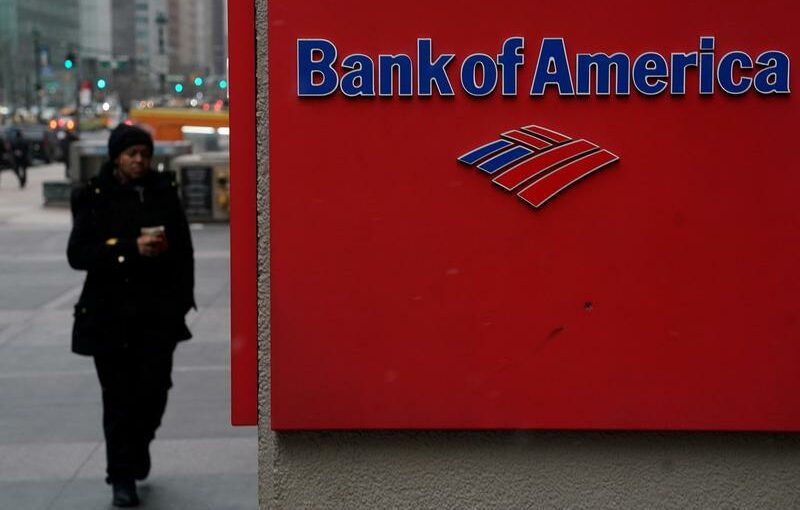(Reuters) -Bank of America Corp’s quarterly profit more than doubled as it released reserves it had set aside to cover potential coronavirus loan losses and recorded big gains in trading that offset weakness in consumer banking.
America’s second largest bank unlocked $2.7 billion from its reserves and unveiled a $25 billion stock repurchase plan, betting on a swift economic recovery on the back of rapid vaccinations.
Consumer banking revenue, however, fell 12% in the quarter ended March as appetite for loans waned, while net interest income, a key measure of how much the bank can make from lending, fell 16% on low interest rates.
“While low interest rates continued to challenge revenue, credit costs improved and we believe that progress in the health crisis and the economy point to an accelerating recovery,” Brian Moynihan, the bank’s chairman and chief executive, said in a statement.
“We believe reserves will continue to come down,” Chief Financial Officer Paul Donofrio said on a call with media.
The Federal Reserve last year brought in ultra-low interest rates to allow for a more rapid recovery from the pandemic-induced recession. However, such low rates eat into the income of lenders like Bank of America, which make profit from the difference between what they earn on loans and pay out on deposits.
Bank of America’s pre-tax, pre-provision profit, seen this quarter as a better gauge of lenders’ true performance, amounted to 68 cents per share, according to Refinitiv. Analysts on average had expected a profit of 66 cents per share.
“The beat came from where you’d think – strong capital markets & a $2.7 billion reserve release,” EvercoreISI analyst Glenn Schorr wrote in a note to clients. “Though (net interest income) was in line (and down ~1% q/q) and expenses were higher than expected.”
The pre-tax, pre-provision profit number for Bank of America was down 21% from a year earlier. In contrast, JPMorgan Chase & Co said on Wednesday its first quarter pre-provision profit was up 18%.
But like JPMorgan, which reported earnings earlier in the week, loans and lease balances fell across Bank of America’s divisions by 7% to $887 billion, driven mostly by lower credit card balances and declines in commercial loans.
The bank’s executives said in January they were optimistic the bank could return to loan growth this year. Appetite for new loans waned during the pandemic as customers spent less and saved more and large companies relied on capital markets for funds rather than their bank.
The bank reported higher credit card net charge-offs in the quarter, but said this would decline in the current quarter, citing recent positive delinquency trends.
Bank of America’s shares rose more than 1% in premarket trade.
Source: Read Full Article
